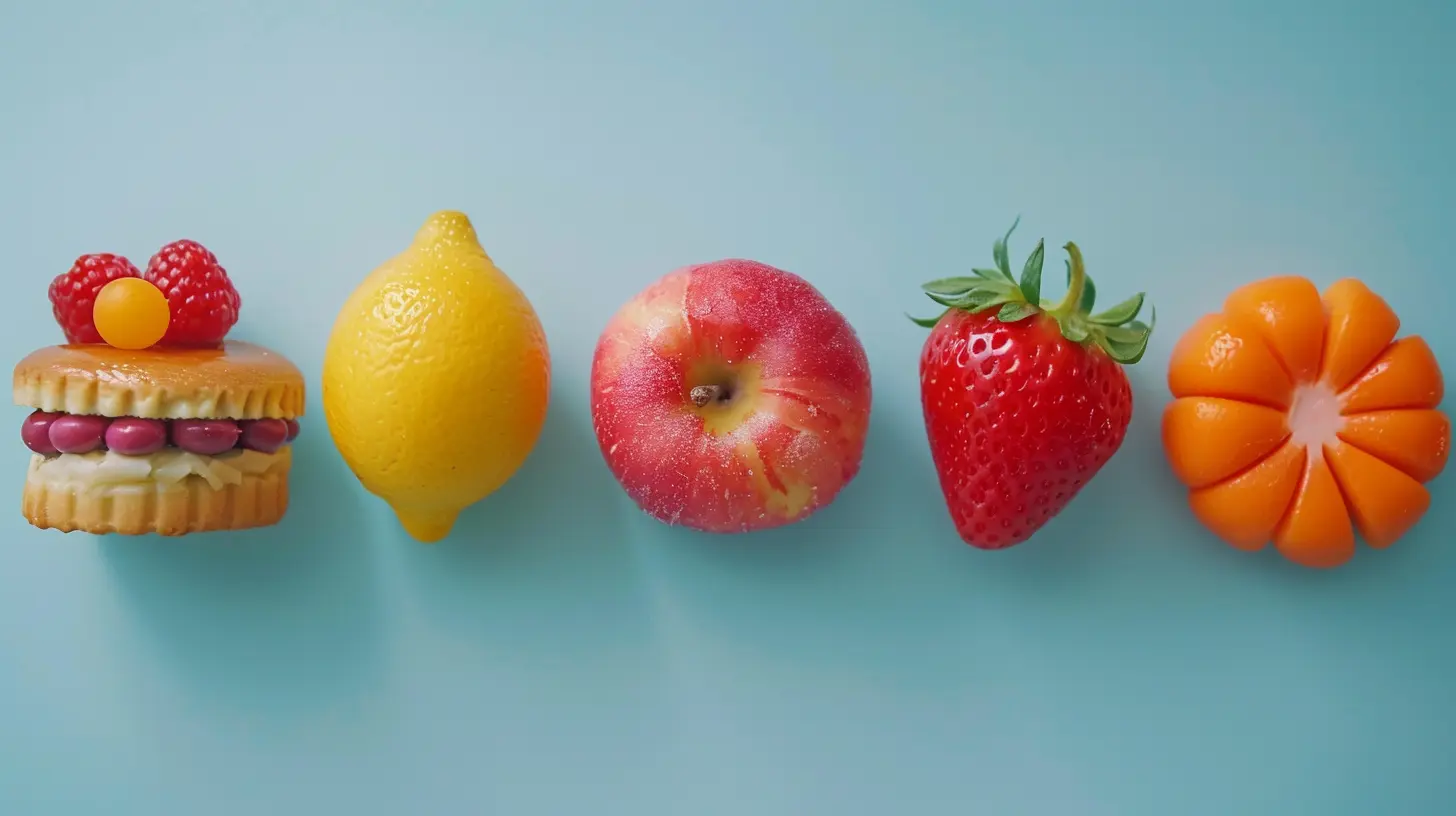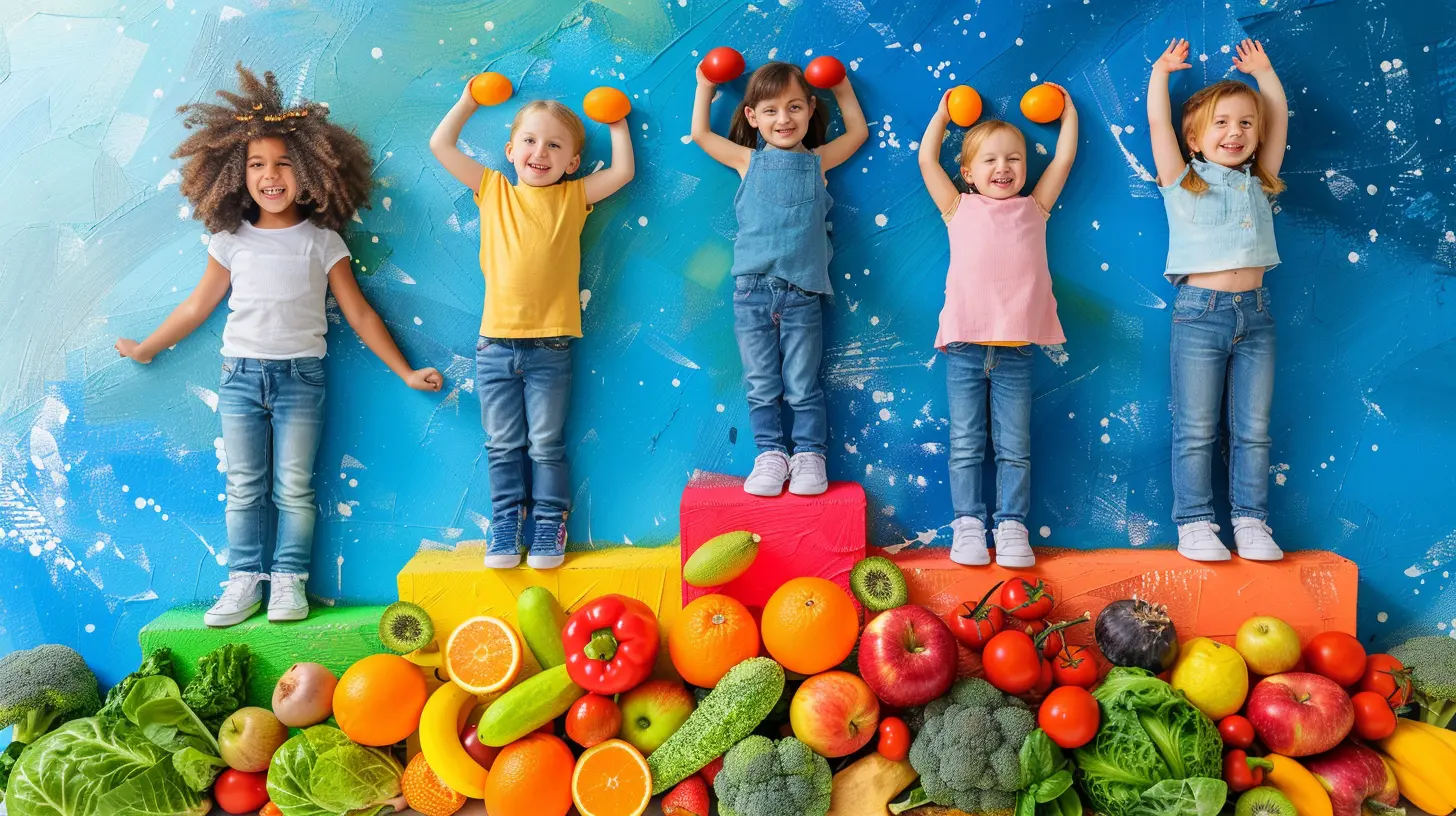Understanding Portion Sizes for Children at Different Ages
28 July 2025
Feeding kids can feel like a guessing game sometimes, right? One minute, they’re asking for third helpings; the next, they won’t touch a pea on their plate. If you’ve ever wondered, “Is my child eating enough?” or “Am I overfeeding them?”, you’re not alone. One of the trickiest parts of parenting is figuring out just how much food is enough without going overboard. That’s where understanding portion sizes comes in.
In this guide, we’ll break down portion sizes for kids based on age, offer some practical tips you can use at the dinner table, and even tackle picky eating. Let’s dig in—pun totally intended.
Why Portion Sizes Matter for Kids
First things first—why even worry about portion sizes? Can’t we just let kids eat until they’re full?Well, yes and no.
Kids are actually great at self-regulating hunger when they’re babies and toddlers. But as they grow—and get exposed to larger food portions at restaurants, advertisements, and well-meaning relatives pushing seconds—their internal cues can get a little confused.
Giving the right portion sizes helps:
- Support healthy growth without overfeeding
- Prevent childhood obesity
- Avoid nutrient deficiencies
- Encourage lifelong healthy habits
Think of it like filling a gas tank. If you overfill it, things get messy. Underfill it, and the car won’t run right. Portion sizes are the fuel gauge for your child’s growing body.
What Affects Portion Sizes?
Before diving into the nitty-gritty of age-based guidelines, let’s remember: not all kids are the same. Your child might need more or less than their peer, and that’s okay!Several factors influence how much a child should eat:
- Age
- Gender
- Activity level
- Growth spurts
- Metabolism
- Appetite (which naturally varies day-to-day)
So, take the following as helpful guidelines—not hard-and-fast rules. Your parenting instincts and your child’s cues matter just as much.
Toddlerhood (1–3 Years): Tiny Tummies, Big Appetites
Toddlers are full of surprises. One day they eat like a linebacker; the next they survive on two crackers and a grape.General Guidelines:
At this stage, a good rule of thumb is about one-quarter to one-half of an adult-sized portion. That might not sound like much, but remember—those little bodies don’t need huge portions.Here’s what a day might look like:
- Grains: 3-5 servings (e.g., ½ slice of bread or 2-3 tablespoons cooked pasta)
- Fruits: 1 cup over the day (e.g., ¼ banana or a few small slices of apple)
- Vegetables: 1 cup over the day (e.g., 2-3 tablespoons of cooked carrots or peas)
- Protein: 2 servings (e.g., 1 egg, 1 tbsp peanut butter, or 1 oz chicken)
- Dairy: 2 servings (e.g., ½ cup milk, 1 cheese stick)
Tips for This Age:
- Offer small portions; let them ask for more.- Finger foods work best—think soft, bite-sized pieces.
- Don’t stress if they don’t eat everything on their plate.

Preschoolers (4–5 Years): Gaining Independence
Preschoolers are little explorers, and that includes food. They’re more aware of hunger and fullness cues, and they love to make their own choices.General Guidelines:
Now, you’re looking at about half to two-thirds of adult-sized portions.Daily Intake Recommendations:
- Grains: 4-6 servings
- Fruits and Veggies: 1½ cups each
- Protein: 3-4 oz total
- Dairy: 2-2½ cups
Mealtime Tips:
- Use child-sized plates to avoid overwhelming them.- Let them help prepare meals—it makes them more interested in eating.
- Keep offering a variety of foods, even if they say “no” at first.
Early School Age (6–8 Years): Hungry Minds and Bodies
Once kids hit school age, their energy needs jump. They’re more active—racing around recess, joining sports, and growing like weeds.General Guidelines:
Children in this age range can handle around two-thirds to full adult-sized portions, depending on their size and activity level.What Might This Look Like?
- Grains: 5-6 servings (e.g., 1 slice of bread, ½ cup cooked rice)
- Fruits: 1½-2 cups
- Vegetables: 1½-2 cups
- Protein: 4-5 oz total (think eggs, lean meats, tofu)
- Dairy: 2½ cups (milk, yogurt, cheese)
Tips:
- Encourage regular meal and snack times.- Watch portion creep—don’t automatically assume more is better.
- Let them listen to their hunger cues rather than push “clean your plate.”
Tweens (9–12 Years): Growth Spurts Galore
This is when the real changes start. Girls often begin puberty earlier than boys, and appetite can swing wildly depending on growth spurts and activity levels.General Guidelines:
Portions get closer to what adults eat—but still keep an eye on balance.Daily Portion Ideas:
- Grains: 5-7 servings
- Fruits: 1½-2 cups
- Vegetables: 2-3 cups
- Protein: 5 oz or more
- Dairy: 3 cups
Suggestions to Keep it Healthy:
- Encourage whole grains, not just white bread and pasta.- Offer balanced snacks—think apple slices with peanut butter, not just cookies.
- Involve them in grocery shopping and meal planning.
Teens (13–18 Years): Adult Portions, Real Talk
By now, many teens need adult-sized portions or even more, especially active boys and girls going through puberty. Their bodies are developing rapidly and require fuel to match.What to Expect:
- Grains: 6-8 servings- Fruits: 2+ cups
- Vegetables: 2½-3½ cups
- Protein: 5-6½ oz+
- Dairy: 3 cups
Keep in mind:
- Appetite will vary—some days they’ll eat everything in the house.
- Peer influence starts showing up in food choices. Be prepared.
- Teach them to read nutrition labels and eat mindfully.
How to Serve the “Right” Portion Without Measuring Everything
Let’s be real—nobody wants to break out a food scale for every meal. Here are some easy visuals:- 🖐️ Palm = a portion of protein (chicken, fish)
- ✊ Fist = a serving of fruits or vegetables
- ✋ Handful = a serving of snacks like pretzels or popcorn
- 🖐️ Open hand = a portion of bread or pasta
Your kid’s hand is a perfect portion guide, because it grows with them!
Let’s Talk Picky Eaters
Ah yes—the picky phase. If your child would happily live on nuggets and mac ‘n’ cheese, you’re not alone. Don’t worry, it’s usually just a phase.Here’s how to guide them through with portion in mind:
- Always offer one “safe” food along with new ones.
- Keep portions small to avoid pressure.
- Celebrate small wins—one bite of broccoli is progress.
- Avoid bribes or forcing bites. That can backfire in the long run.
Remember: exposure without pressure is key.
Portion Sizes vs. Serving Sizes: What’s the Difference?
Tricky but important! A serving size is a standard measurement used in nutrition guides (like USDA recommendations). A portion size, however, is what you actually put on the plate.For example:
- USDA might say ½ cup of rice = 1 serving
- But your child might eat ¼ cup, which is their portion
So while serving sizes provide great guidance, portion sizes are personal and should reflect your child’s hunger, age, and activity.
Snacks and Treats: How Much is Too Much?
Snacks are a normal part of a child’s eating pattern—but they can easily become a mini-meal if the portions are too large.Keep snacks:
- About 100–150 calories depending on age
- Balanced with protein and fiber to fuel (think yogurt + berries or cheese + crackers)
- Away from screens, so kids stay mindful while eating
As for desserts and treats? They're totally okay in moderation! Just try not to label them as “bad” or “off-limits.” That only makes them more appealing.
Final Thoughts: Listen to Your Child’s Cues
There’s no one-size-fits-all answer when it comes to feeding kids. Some days they'll clean their plates and ask for seconds. Other days, you’ll wonder if they’re secretly becoming fruitarians.The key takeaway? Trust the process.
By offering age-appropriate portion sizes, balanced meals, and a positive food environment, you’re already doing a fantastic job. Keep offering variety, stay patient through picky phases, and most importantly—enjoy meals together as a family.
Because food isn’t just fuel. It’s connection, love, and a whole lot of messy, beautiful learning.
all images in this post were generated using AI tools
Category:
Kids NutritionAuthor:

Liam Huffman
Discussion
rate this article
1 comments
Summer McCord
Empower your child with healthy habits by mastering age-appropriate portion sizes for lifelong wellness!
August 7, 2025 at 3:01 PM

Liam Huffman
Thank you! Teaching children about appropriate portion sizes is crucial for fostering healthy eating habits that last a lifetime.


